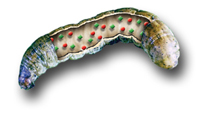Dr. Marcus Adair, Senior Field Research and Development Scientist for Valent Biosciences Corporation shares insight on current research issues.
Q: What are some of the key questions you are looking to answer?

Dr. Adair: From a company perspective, I think the one of the key questions involved our research with Bt and synthetic pyrethroids (SP). The objective was determining if our Bts in combination with one of the older SPs would result in synergistic activity. Would the combinations at low rates provide better activity than full rates of either component? This would have benefits economically for the grower as well as allow minimal rates of synthetic pyrethroids and minimal disruption to beneficial insects. Another question pertains to the development of resistance to key conventional insecticides. Despite knowledge gained in sound biological control or IPM practices in the past years, some chemicals are still being overused. The question we’re trying to answer is how quickly resistance may develop in key economic pests to these compounds.
Q: What are you learning about those key questions?
Dr. Adair: Data from 2010 trials are generally showing good results from the Bt + SP combination treatments against key pests. Results from resistance studies are still inconclusive at this point.
Q: What was the most striking element that came out of last year’s trials?
Dr. Adair: I would think that our success in demonstrating excellent insect control in experiments where Bts were rotated with the newer active ingredients.
Q: Are you testing any new formulations?
Dr. Adair: VBC is continuing research efforts in developing new and improved formulations of Bts. This is actually more of a research progress report than a question, although we are trying to answer the question of activity of these improved formulations/strains compared to existing products. Aggressive evaluation programs have been initiated in the last two years to determine comparative activity of these compounds.
Q: Earlier you mentioned resistance. Has resistance been reported? Is it a looming threat?
Dr. Adair: The use of Bts are an excellent option for “within cycle” rotation and tank-mixing to minimize resistance selection pressure. This practice will help in maintaining the current arsenal of newer insecticides (rynaxypyr, flubendiamide) and allow use of all the older products such as synthetic pyrethroids, spinosad and so on.
It is now reported that growers in Central Thailand and Central Phillippines are experiencing insecticide resistance to diamide chemistry in the diamondback moth. Resistance studies are showing high levels of resistance to flubendiamide in Central Thailand and rynaxypyr in Central Phillipines. This resistance development follows 2-4 years of using this class of chemistries in the marketplace.
